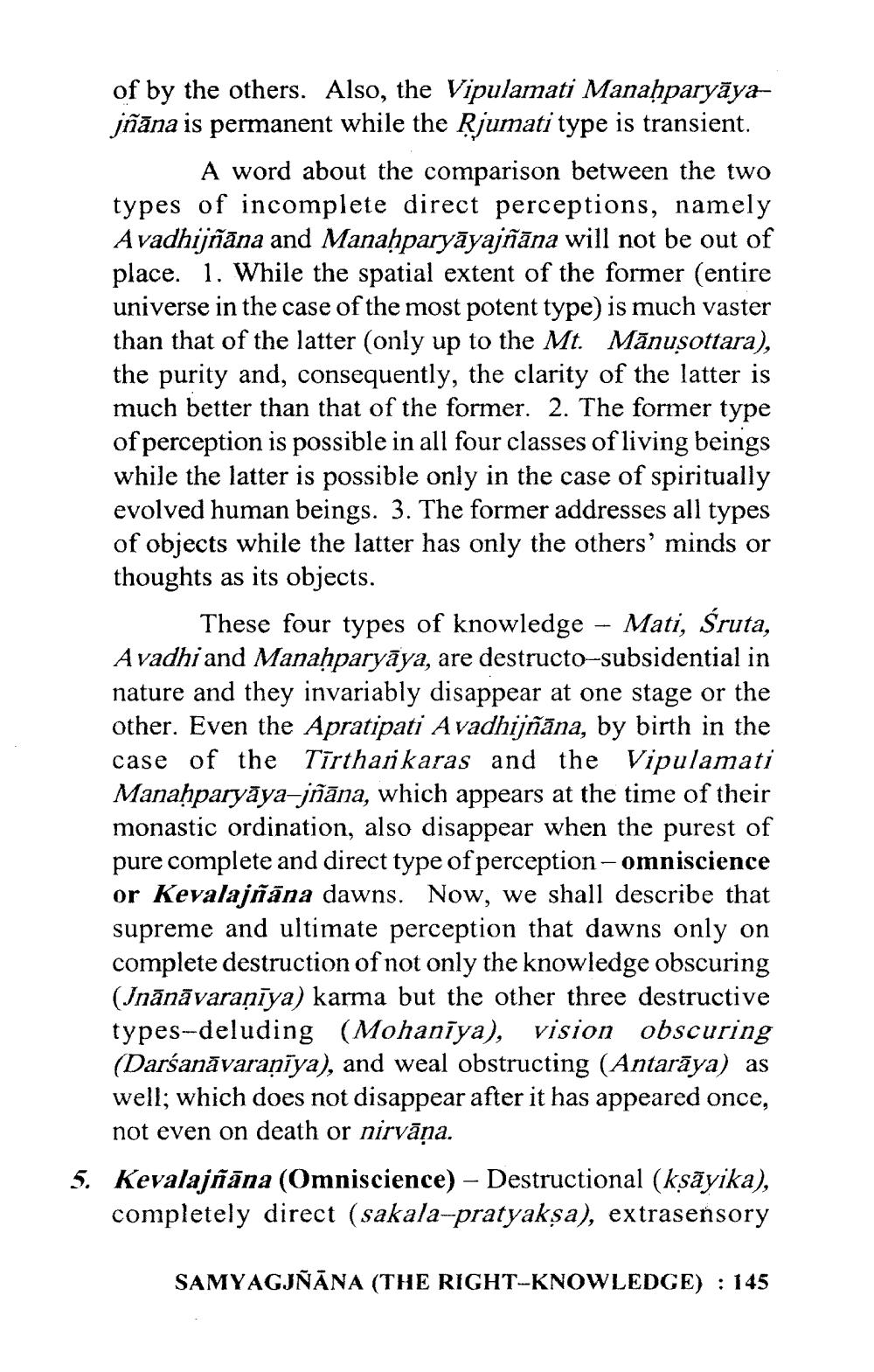________________
of by the others. Also, the Vipulamati Manaḥparyāyajñāna is permanent while the Ķjumati type is transient.
A word about the comparison between the two types of incomplete direct perceptions, namely Avadhijñāna and Manahparyāyajñāna will not be out of place. 1. While the spatial extent of the former (entire universe in the case of the most potent type) is much vaster than that of the latter (only up to the Mt. Mānusottara), the purity and, consequently, the clarity of the latter is much better than that of the former. 2. The former type of perception is possible in all four classes of living beings while the latter is possible only in the case of spiritually evolved human beings. 3. The former addresses all types of objects while the latter has only the others' minds or thoughts as its objects.
These four types of knowledge - Mati, Sruta, Avadhi and Manaḥparyāya, are destructo-subsidential in nature and they invariably disappear at one stage or the other. Even the Apratipati Avadhijñāna, by birth in the case of the Tīrthari karas and the Vipulamati Manaḥparyāya-jñāna, which appears at the time of their monastic ordination, also disappear when the purest of pure complete and direct type of perception-omniscience or Kevalajñāna dawns. Now, we shall describe that supreme and ultimate perception that dawns only on complete destruction of not only the knowledge obscuring (Inānāvaraniya) karma but the other three destructive types-deluding (Mohanīya), vision obscuring (Darśanāvaranīya), and weal obstructing (Antarāya) as well; which does not disappear after it has appeared once,
not even on death or nirvāṇa. 5. Kevalajñāna (Omniscience) - Destructional (ksāyika),
completely direct (sakala-pratyaksa), extrasensory
SAMYAGJÑĀNA (THE RIGHT-KNOWLEDGE) : 145




